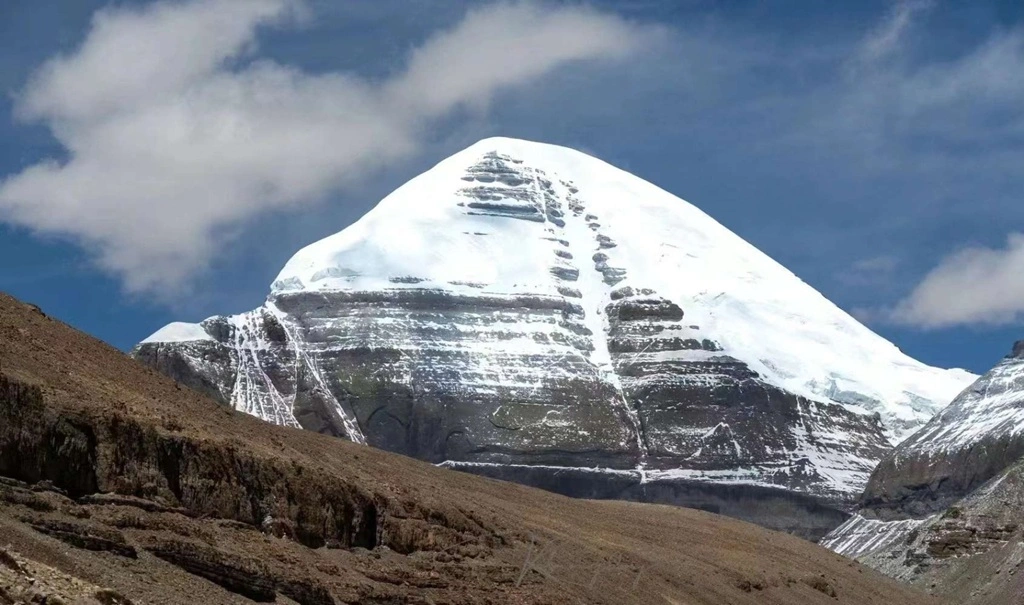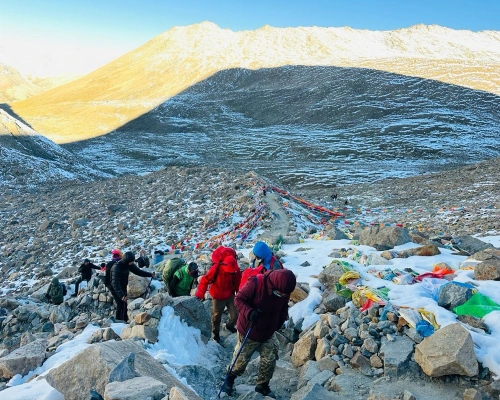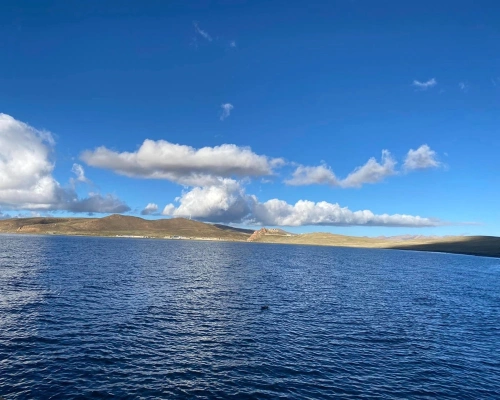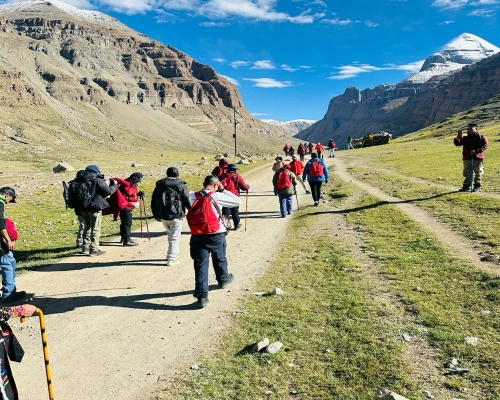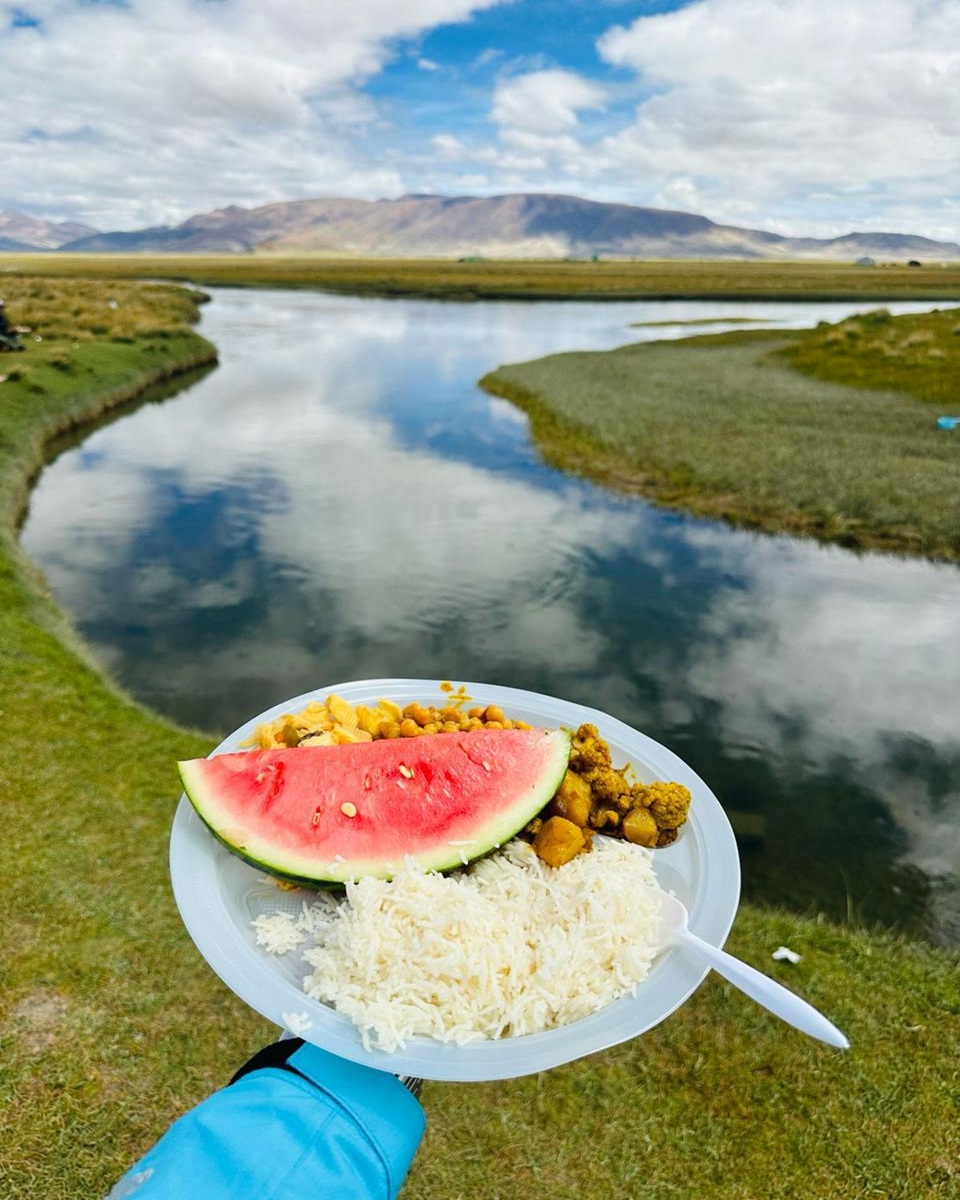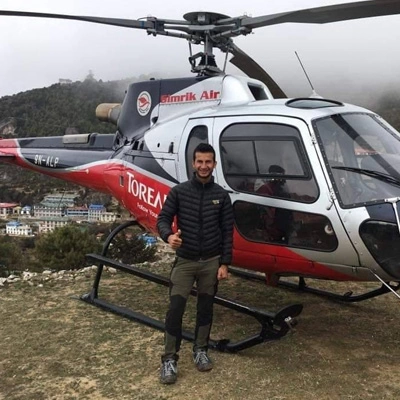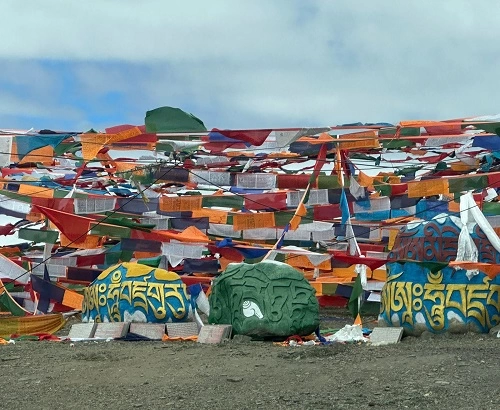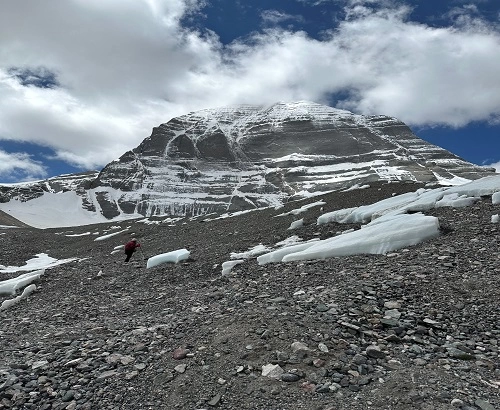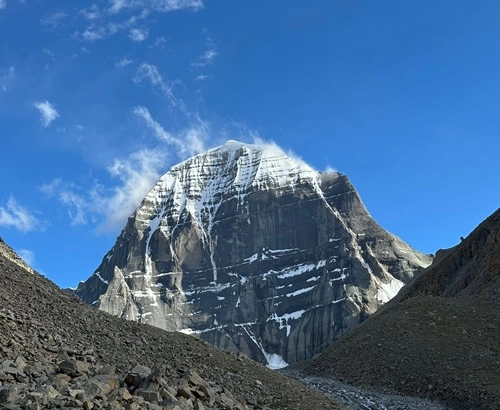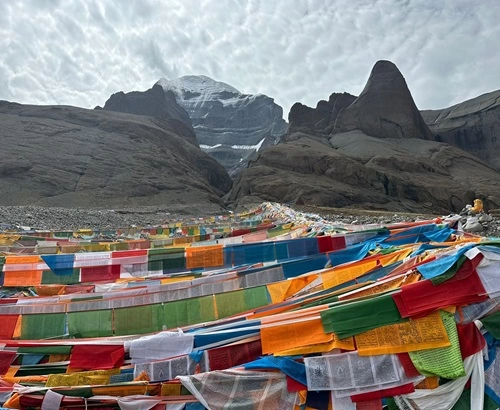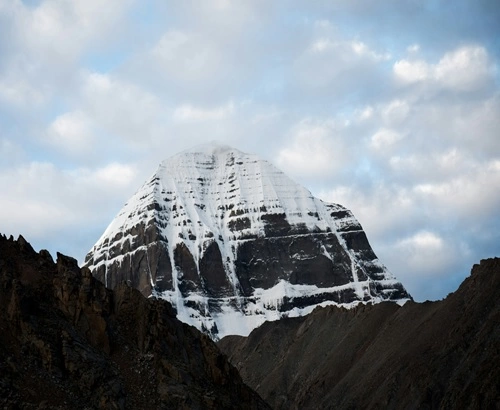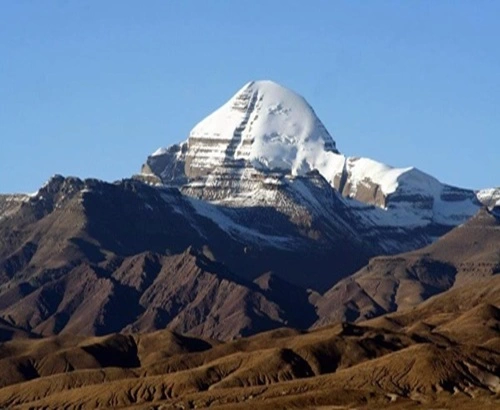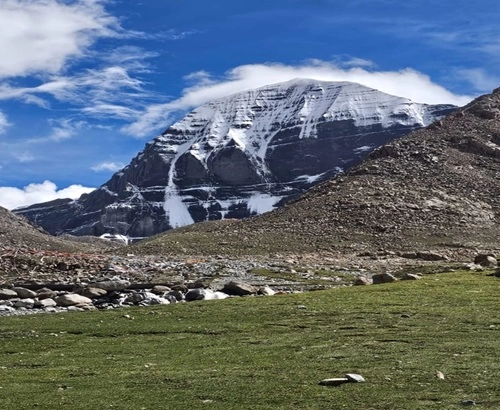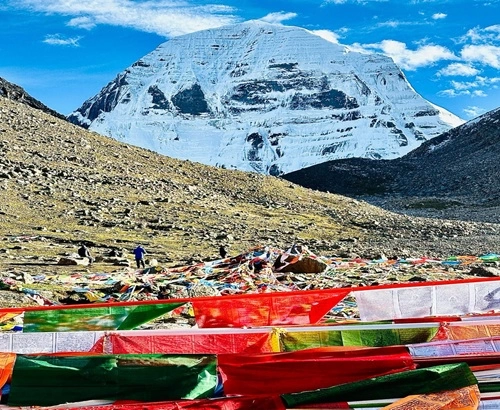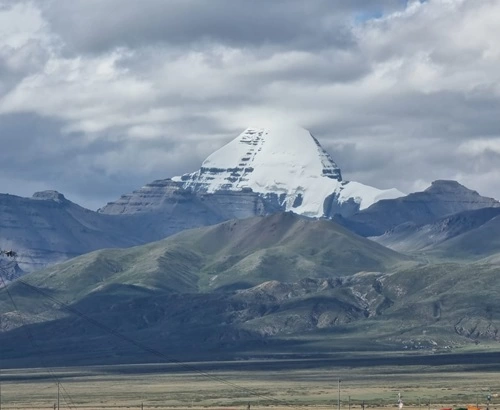Introduction to Kailash mansarovar 10 Days Yatra from Australia Package
Experience a once in a lifetime journey on our 10-day Kailash Mansarovar Yatra from Australia, that is suitable for all types of travellers, from the spiritual oriented traveller to the adventure traveller.
Indeed, this holy pilgrimage moves from living in a city in Australia to travelling to the remote area of Tibet, to Mount Kailash ( 6,638 m high ) and Lake Mansarovar (4,590 m high).
The adventure begins with a flight from Australia to Kathmandu, Nepal, and you will be greeted by cold weather in Kathmandu. In Kathmandu, a briefing session will take place, informing you of the unique journey you are about to undertake. The visa is on arrival if you are an Australian, so you do not have to wait for or arrange a visa prior to arrival.
After completing the formalities, the flight to Lhasa or Simikot (whatever route you choose) will be scheduled and you will be on your way, beginning your overland journey across the Tibetan plateau.
The Kailash Parikrama really is just about the sole focus of the pilgrimage. Every pilgrim makes this spiritual trek around the sacred mountain for three days, completing both the pilgrimage around the mountain and the tough slog over the Dolma La Pass (5545 m) that is sometimes difficult for those poorly acclimatised or of a weak constitution.
Pilgrims will typically have a holy dip at Lake Mansarovar, as it is believed that any dip in these waters will cleanse the soul and bless the believer.
The package includes all you need for a successful pilgrimage, experienced Sherpa guides, vegetarian food, oxygen and medical backup, and the best lodges along the trek. The itinerary has also been designed with reasonable acclimatisation, spiritual weight and physical comfort.
This custom-designed product line is for pilgrims and travellers from Australia looking to go through Nepal to Kailash without wasting time. In this way, you will save time in the process and enjoy a nice, peaceful spiritual journey from Australia to the house of Lord Shiva with the arrival of a Nepal visa and facilitate the process.
Note: We have opened booking Kailash Mansarovar Yatra 2026 & 2027 for Western passport holders (Australia, USA, Canada, UK etc. ) with departure designations in any whole month between April to September, and if you have a visa free passport, you can arrive in Nepal at your discretion, Note if you have visa requirements you must arrive on a scheduled arrival arrival day. Check the passport details and give yourself a booking.
Highlights Of Kailash Yatra From Australia
- See the most holy and ancient Tibetan monastery that is known to have deep spiritual power.
- Drive comfortably on a well-constructed asphalt road to the base of Mt. Kailash (Darchen).
- Drive over beautiful, high mountain passes: Thong La, Lalung La, and Mayum La with views of Gaurishankar and Shishapangma Peaks.
- 3-day Mt. Kailash Parikrama to cover a distance of 39 km (horse option is available).
- Pass the highest point of the trek – Dolma La Pass (5,630 m) during the Parikrama.
- Be in the tranquil place of Lake Manasarovar and its spiritual surroundings.
- If you can't move on foot, you can do the sacred Parikrama of Lake Manasarovar by car or bus.
- Be amazed by the magnificent northern face of Mt. Kailash.
Kailash Mansarovar Yatra From Australia during the Year of the Fire Horse 2026
Going to the iconic destination Mount Kailash in the Year of the Fire Horse (2026) is one of the most spiritually charged times to undertake this amazing journey.
Tibetan lore indicates that, for a seeker, wandering around Mount Kailash during a Horse Year is regarded to count as thirteen times in any other year, and 2026 is a once-in-every-12-year cycle with abundant cosmic and significant religious authority.
This will mean a lot to the thousands of pilgrims from Hinduism, Buddhism, Jainism and Bon, who will be gathering together at Mount Kailash and Lake Mansarovar in 2026 to seek blessings and transformation.
Also, for Australian pilgrims, it is an extraordinary time to go to Nepal, and it is the spiritual energy in the Horse Year in 2026 which makes every prayer, meditation and even every step you take while circumambulating Mount Kailash will carry great significance.
Our travel packages for the 2026 Horse Year will ensure that you will not be embarking on this life-changing pilgrimage again until 2038.
10 Days Kailash Mansarovar Yatra during Sheep (Fire) Year 2027
The 10-day Kailash Mansarovar Yatra in the Sheep Year (2027) promises a spiritually calming and reflective experience.
The Sheep year is peaceful, harmonious and compassionate compared to the Horse Year and enables pilgrims to experience a level of inner tranquillity and healing that is not available in the Horse Year.
It is a sacred pilgrimage experience which includes the Kailash Kora, visits to Lake Mansarovar and stops at monastic locations on the Tibetan plateau.
2027 will suit those out there who want a slightly quieter, more meditative pilgrimage experience and want to avoid large groups in 2026. Our considered itinerary travelling from Australia via Nepal includes all logistics, including acclimatisation, permits, transport and guides.
Fire Sheep energy will bring a calm and spiritual energy along with an emotional connection to what your Kailash Yatra means.
Whether you could not make the 2026 Horse Year pilgrimage and are looking for a gentler pilgrimage experience, or are experiencing your first pilgrimage aligned with the sacred energy of Mount Kailash and the tranquil water of Mansarovar, 2027 provides that divine, serene experience for you.
Kailash Mansarovar Yatra Tour Cost From Australia – 10 Days
The price of the Kailash Mansarovar Yatra from Australia is based on the number of travelers in the group. This often takes the form of the standard itinerary that departs and returns to Kathmandu, which can take approximately 10 days. However, this will take about 15-16 days, since we need to process the Tibet Travel Permit and provide the group visa to enter Tibet.
As an Australian traveler, you can apply for and receive visa-on-arrival access in Nepal, meaning, entering Nepal is quite easy to do.
Here is the tour cost in AUD:
- 1 traveler - AUD 2,100 per traveler
- 2-3 travelers - AUD 1,900 per person
- 4-6 travelers - AUD 1,850 per traveler
- 7-10 travelers - AUD 1,750 per traveler
All your trip associated expenses are included in the above listed costs, which means, all travel permits, transport, accommodation, meals, your guides services and completing any Tibet group visa process.
When you arrive into Kathmandu, we will do all the required process and upon receiving the original passport, we will submit the Tibet group visa application. We would have already pre-applied for the Tibet Travel Permit preparation prior to your departure. This means, all travel permits and process costs are included in the trip price.
Kailash Mansarovar Yatra for Australian Passport Holders
We are proceeding with the application for Kailash Mansarovar Yatra 2026 for applicants that hold an Australian Passport . We have the official letter from the Tibet Tourist Bureau, Lhasa, that Foreign Nationals (AU Passport Holders included) are being allowed to undertake pilgrimage via the entry point of Nepal.
IMPORTANT FIXED DEPARTURE DATES FOR 2025
- Departures from May to September 2025
- Full Moon Specials - each of these has monthly departures available upon request
The good news is that Australian passport holders receive a visa on arrival into Nepal, which reduces the need to enter Nepal before the date of your tour commencement. We would like you to check the following before proceeding to book
- Passport is validity for at least 6 months beyond your travelling dates
- Passport has at least 2 blank pages for your visa
- If travelling on a later date than early in the season, we encourage passports to be valid through at least March 2027.
The only weighted variable component to the 10 Days Kailash Mansarovar to visit Lake Mansarovar and Mt Kailash and return to Kathmandu is AUD 1,750 - 2,100 per person each depending on the group size.
What Extra Costs to Consider as an Australian Traveller During Kailash Mansarovar Yatra?
Most of the services on the Kailash Mansarovar Yatra are included in the package. However, a few voluntary or unavoidable extras can result in additional costs to the travellers.
Meals in Kathmandu
The hotel in Kathmandu will take good care of you, but if you want to have meals outside while sightseeing or during your free time, it is on you to settle that with the restaurant. Dinner in a local restaurant would set you back by about AUD 10–20.
Hiring a Local Porter
If you take a decision to hire a local porter for Kailash Parikrama, it most probably will be about CNY 1300–1500 or AUD 280–325. A porter can, therefore, carry your daypack (up to 5 kg) while you cover the 3-day trek.
Hiring a Horse
If you decide to hire a horse for the whole Kora (circumambulation), then you have to pay CNY 4500–5000 (AUD 960–1,065), which is approximately. Alongside the horseman who will help you with those things during the trek, this is included.
Ambulance Van (Derapuk to Darchen)
In case of emergency, when you get sick or become unable to continue the trek, the ambulance service from Derapuk to Darchen costs per person CNY 900 or AUD 190 (shared basis). Also, do not forget that if you want to stay in Darchen for one more night, that cost is yours to cover.
Note: Even if you come up with the opposite idea within an hour after booking, your porter and horse are non-refundable. You and your guide can decide if you want this service at Mansarovar Lake or Darchen after the final consultation.
Astapath Visit (If Permitted)
To make a spiritual and scenic journey to Astapath (allowed only by Chinese authorities), one may reach there by a jeep hired from Darchen, which will cost CNY 500–650 or around AUD.
Hotel Upgrade in Darchen
The standard hotel rating in Darchen is 2 to 3 stars. Should you want to stay in a 4-star hotel, the price will be around AUD 90 per person.
Charan Sparsh Visit
The Charan Sparsh extension (approx. 7 km trek from Derapuk) is not a part of the 2025-2026 itinerary due to a lack of permission from Chinese authorities.
Should Chinese authorities allow it later on, we will officially add it as a part of our schedule, but not until we get their permission, as we are the first to be honest and transparent with our customers.
Booking Open for Kailash Mansarovar Yatra on Full Moon Dates – 2025 & 2026
The Kailash Mansarovar Yatra during the Full Moon is especially auspicious and exceptional for Hindus, Buddhists, Jains and Bon practitioners alike.
The Full Moon represents enlightenment, completion and divine energy; it is thus the ideal time to complete the Kora (circumambulation) of Mount Kailash and have a holy dip in Lake Mansarovar.
In full moon conditions, the mystique of Mount Kailash and the surrounding landscape will become increasingly ethereal and surreal. Pilgrims will feel that the blessings afforded and received will have a multiplier effect on them during the full moon time period, and ideas about spirituality will be heightened.
There are very few times in life when we would have the chance to be in this depth of peaceful nature and divine affiliation; certainly for me, my best moments were the peaceful, calm moonlight nights during the Yatra experience compared to other moments during the Yatra.
Reservations for the Full Moon Yatras are now open for the 2025 and 2026 years.
Full Moon dates:
- 2025: 18 July, 18 August, 17 September
- 2026: 03 June, 03 July, 01 August, 31 August
